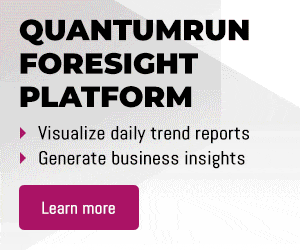Green steel: Forging a cleaner future
Green steel: Forging a cleaner future
Green steel: Forging a cleaner future
- Author:
- April 3, 2025
Insight summary
Steel production is undergoing a major shift toward cleaner methods, with companies and governments investing in electric arc furnaces (EAFs) and hydrogen-based processes to cut emissions. This transition could reshape industries, affecting job markets, trade policies, and the cost of goods while also requiring significant investments in renewable energy. As countries compete to lead in green steel, businesses may need to rethink supply chains, and governments may introduce new policies to support low-emission materials in infrastructure and manufacturing.
Green steel context
Green steel is produced with significantly lower carbon emissions, often using EAFs powered by renewable electricity or hydrogen-based direct reduced iron (DRI). The shift is critical because steel production accounts for up to 9 percent of global carbon dioxide emissions—more than all passenger vehicles combined, according to the 2023 Global Energy Monitor (GEM). While Europe has led the way due to regulatory pressures, the US is now making substantial investments, including up to USD $1 billion in government funding for low-emissions steel projects, according to the US Department of Energy.
The industry has increased its adoption of EAF technology, with 43 percent of planned new steelmaking capacity now based on EAF—up from 33 percent the previous year, according to GEM data. However, despite this shift, most steel production still relies on blast furnaces and basic oxygen furnaces (BF-BOF), which account for around 86 percent of the industry’s emissions. To meet the International Energy Agency’s Net Zero by 2050 target, over half of steel production would need to transition to EAF by mid-century, requiring the cancellation or retirement of 347 million metric tons of BF-BOF capacity. While hydrogen-based DRI offers a promising alternative, it requires significant investments in green hydrogen infrastructure, which remains in its early stages.
Countries with growing steel demand, particularly China and India, play a crucial role in this transition. China accounts for nearly 60 percent of global steel sector emissions and has announced policies to curb them, but its continued investments in coal-based steel production pose challenges, according to data from Climate TRACE. Meanwhile, GEM reports that India is rapidly expanding its steel capacity, planning to add 153 million metric tons per year of BF-BOF capacity by 2030, which could quadruple its steel-related emissions by 2050. To accelerate the shift to green steel, strategies such as green steel hubs—manufacturing clusters that leverage low-cost renewable energy—are being explored in the Middle East, South America, and Oceania.
Disruptive impact
As companies invest in cleaner production, the demand for skilled workers in hydrogen-based steelmaking and electric arc furnace operations may rise. This trend could lead to workforce training programs and higher-paying jobs in regions where steel production is a major employer. Consumers may also see higher prices for vehicles, appliances, and construction materials due to the initial costs of cleaner technology. However, as more manufacturers transition to green steel, economies of scale could eventually reduce costs, making sustainable products more affordable over time.
Automakers may need to adjust their material sourcing strategies to align with sustainability goals, potentially partnering with steelmakers that use hydrogen-based direct reduced iron. Construction firms could see changes in building regulations, as governments may introduce incentives or mandates for low-emission materials in infrastructure projects. Companies producing green steel may also find new business opportunities, such as selling carbon credits or offering premium-priced sustainable materials to industries prioritizing environmental impact. However, transitioning from traditional steel production may be costly, requiring heavy investment in clean energy sources like hydrogen and renewable electricity.
Trade policies could shift, with tariffs or incentives favoring lower-emission steel imports and penalizing high-emission alternatives. National energy strategies may also change, as producing hydrogen-based steel requires significant renewable energy capacity, pushing governments to accelerate wind, solar, and hydrogen infrastructure development. Public procurement policies may further drive demand by prioritizing green steel in government-funded projects such as bridges, highways, and defense contracts. Additionally, countries with strong emissions targets could collaborate to create a global market for cleaner steel production.
Implications of green steel
Wider implications of green steel may include:
- Steelmakers shifting production to regions with cheaper renewable energy, leading to job creation in new industrial hubs and job losses in traditional steelmaking areas.
- Countries investing in hydrogen infrastructure to support green steel, leading to higher demand for renewable energy and changes in national energy policies.
- Governments adjusting trade policies to impose tariffs on high-emission steel imports, reshaping global steel supply chains and influencing diplomatic relations.
- Companies offering “green premium” products made from low-emission steel, creating a new market segment for sustainability-focused consumers.
- Steel-reliant industries such as construction and manufacturing adopting new building codes and engineering standards to accommodate lower-carbon materials.
- Research institutions developing new steelmaking technologies, leading to advancements in cleaner industrial processes beyond the steel industry.
- Countries competing to become leaders in green steel production, leading to new economic alliances and regional investment shifts.
- The steel industry reducing its reliance on coal, leading to lower emissions but also economic challenges for coal-dependent communities.
- Governments using subsidies and tax incentives to accelerate green steel adoption, influencing corporate investment strategies and market competitiveness.
Questions to consider
- How could the shift to green steel change the cost and availability of products you use every day?
- What opportunities or challenges might arise in your local job market as steel production moves toward cleaner methods?
Insight references
The following popular and institutional links were referenced for this insight:



